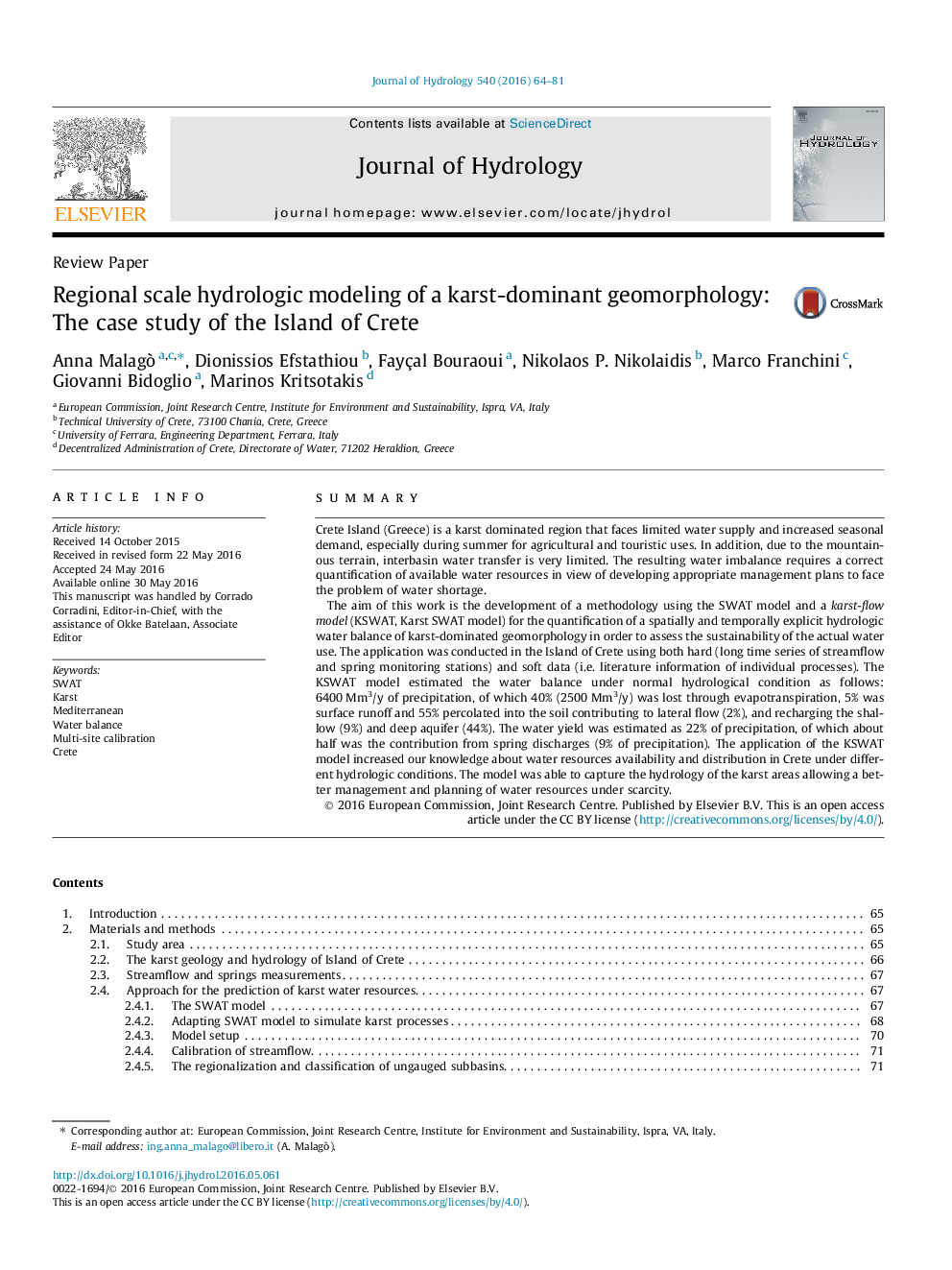| کد مقاله | کد نشریه | سال انتشار | مقاله انگلیسی | نسخه تمام متن |
|---|---|---|---|---|
| 6409517 | 1629912 | 2016 | 18 صفحه PDF | دانلود رایگان |
- SWAT model was adapted and integrated with a karst-flow model (KSWAT model).
- KSWAT has allowed calibrating 22 streamflow and 47 springs gauging stations.
- KSWAT has captured the spatial and temporal variability of water balance.
- The proposed methodology has allowed defining the karst recharge area of each spring.
- The water balance was assessed and compared in different hydrological conditions.
SummaryCrete Island (Greece) is a karst dominated region that faces limited water supply and increased seasonal demand, especially during summer for agricultural and touristic uses. In addition, due to the mountainous terrain, interbasin water transfer is very limited. The resulting water imbalance requires a correct quantification of available water resources in view of developing appropriate management plans to face the problem of water shortage.The aim of this work is the development of a methodology using the SWAT model and a karst-flow model (KSWAT, Karst SWAT model) for the quantification of a spatially and temporally explicit hydrologic water balance of karst-dominated geomorphology in order to assess the sustainability of the actual water use. The application was conducted in the Island of Crete using both hard (long time series of streamflow and spring monitoring stations) and soft data (i.e. literature information of individual processes). The KSWAT model estimated the water balance under normal hydrological condition as follows: 6400Â Mm3/y of precipitation, of which 40% (2500Â Mm3/y) was lost through evapotranspiration, 5% was surface runoff and 55% percolated into the soil contributing to lateral flow (2%), and recharging the shallow (9%) and deep aquifer (44%). The water yield was estimated as 22% of precipitation, of which about half was the contribution from spring discharges (9% of precipitation). The application of the KSWAT model increased our knowledge about water resources availability and distribution in Crete under different hydrologic conditions. The model was able to capture the hydrology of the karst areas allowing a better management and planning of water resources under scarcity.
190
Journal: Journal of Hydrology - Volume 540, September 2016, Pages 64-81
